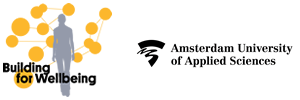Neuroarchitecture
How can the emerging field of biometric technology deliver evidence-based design solutions?Using Biometric Technology and Neuroarchitecture to Track User Experience
The Neuroarchitecture research line uses mobile eye-tracking along with other biometrics to research the human experience of urban streets. A heatmap can be created based on an aggregation of numerous participants’ eye fixations. It reveals where people (unconsciously) look, where they focus and helps to gather a better understanding of how the architecture of streetscapes determines our (visual) experience, behaviour, and perception of a place. Explorative research is conducted to analyse the visual experience and perception of commonly applied design principles for contemporary high-density environments. Three classic design principles associated with streetscapes on a human-scale are selected: (1) horizontal–vertical rhythms and variety; (2) active ground floor; (3) tactile materials and level of detail located in the street facade and street-space. The aim is to explore how biometric technology and neuroarchitecture can be used in an evidence-based review of applied design solutions in extreme density environments based on people’s visual experiences. It is therefore combined with traditional social-science research techniques such as user surveys to include the users’ appreciation of different streetscapes.
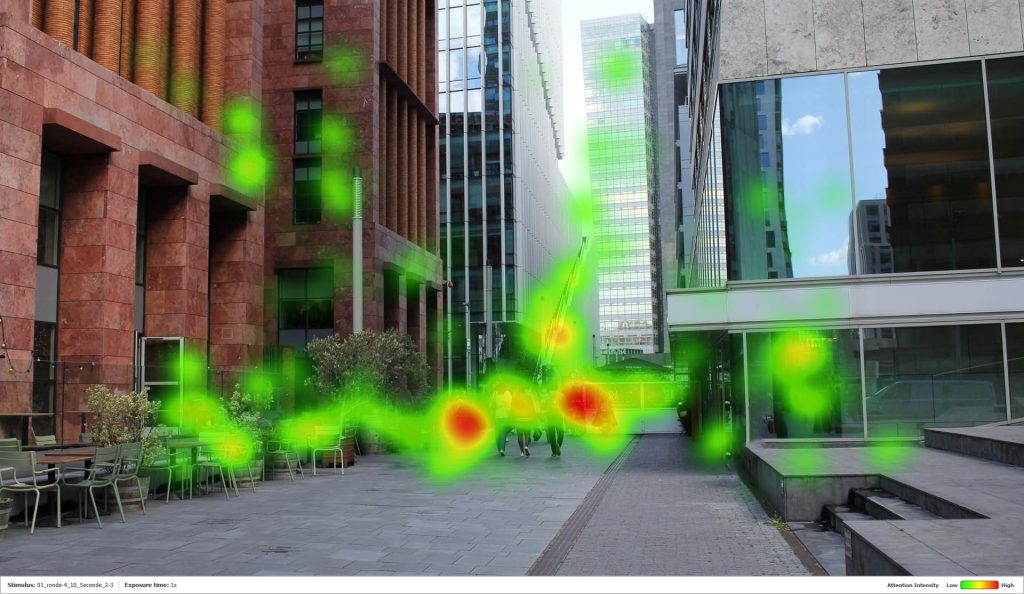
The eye-tracking heat map of Claude Debussylaan in Amsterdam shows that people, street furniture and architectural details catch the viewer’s attention when gazing at this image
Eye-tracking the City
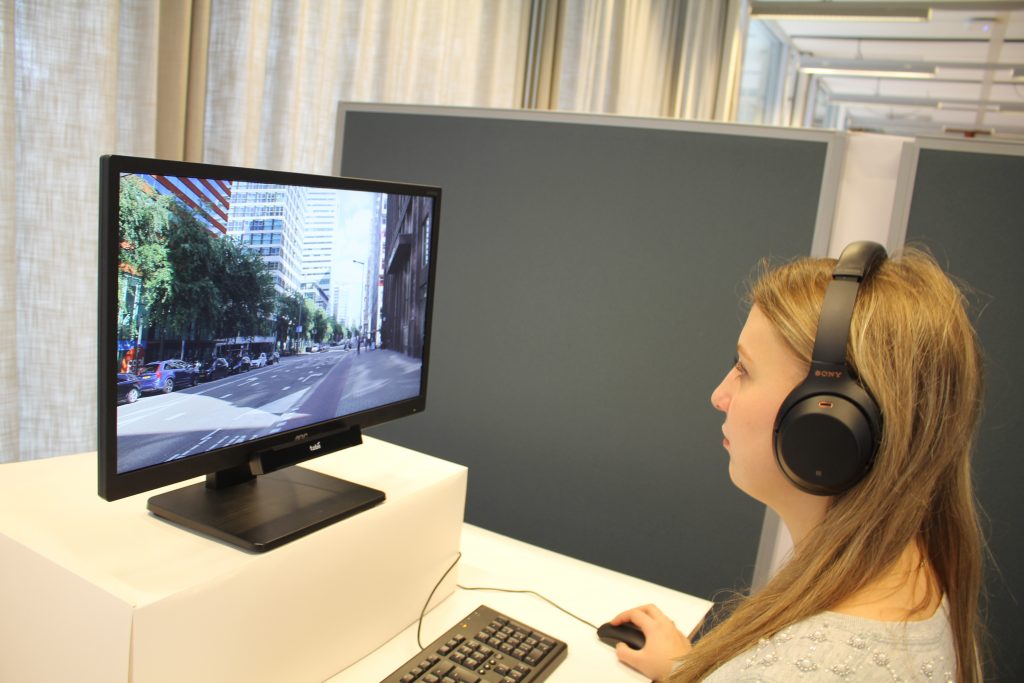
In a laboratory setting, we eye-tracked participants as they viewed different images of streetscapes to understand their (un)conscious scanning behaviour of different settings
For the Neuroarchitecture research line, we collected data from tests in field and laboratory settings to understand how people respond on both a conscious and unconscious level to dense, mixed-use urban areas. The ‘classic’ design solutions for creating streetscapes on a human-scale in densified areas have been assessed by eye-tracking over 90 participants in a laboratory setting, all of whom viewed photographs. In this study, in different rounds, two types of streets in western cities were assessed: car-centric streets and pedestrian-friendly streets.
The first recorded seconds show the shift from unconscious scanning to the observation of the environment. For every image, each participant’s eye-tracked data were processed, aggregated, and represented as heatmaps. A survey covered the participants’ perceptions of the scenes presented. The data were processed and projected using the latest Imotions software. The study drew on theories from the field of neuroarchitecture and used input from our co-researchers (a panel of (landscape) architects and urban designers) to analyse the eye-tracked patterns.
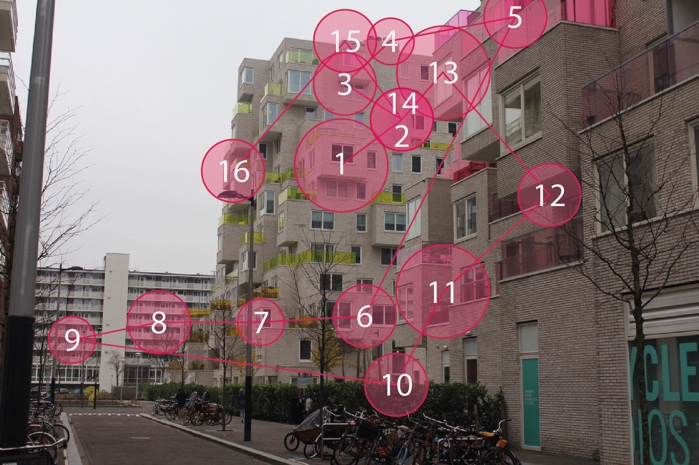
The first 8 seconds of one participant’s eye fixation with a distant viewpoint

Aggregated heatmap of George Gershwinlaan, Amsterdam, using eye-tracked data collected from 31 participants. It shows the eye-movement dynamics from the start, with eye-fixations centring along a vertical area of interest (top left); clustered towards the end of the street (top right); and strong central fixation (bottom left) developing
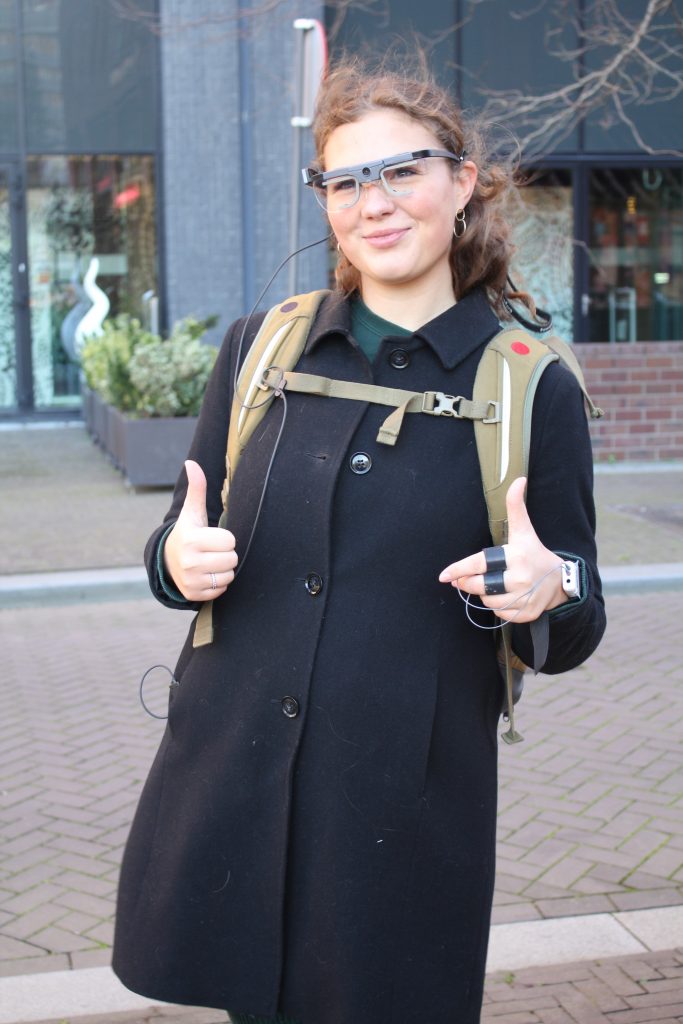
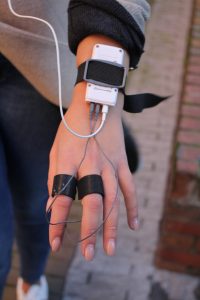
We conducted a field test in Amsterdam and Greater Boston in collaboration with our advisory board partners Ann Sussman and Justin Hollander from the Tufts School of Urban and Environmental Policy and Planning (UEP) and the Human Architecture + Planning Institute (theHapi.org). Mobile eye-tracking glasses (Tobii 2) were used in Amsterdam and Boston to track people’s visual attention when they walked down a few local streets. The eye-tracking glasses were equipped with supportive technologies such as galvanic skin response (GSR) and heart-rate monitors to understand how the body responds to (visual) stimuli. Simultaneously, promising meta-data visualisation techniques were invented to project the data and analyse the results.
The results of this collaborative pilot study will be published as a chapter in the book: Programming for the Subliminal Brain: Biometric Tools Reveal Architecture’s Biological Impact.
Unlock Neuroarchitecture Methods and Technologies to Enhance Your Design
How can we analyse large quantities of data generated by emerging biometric tools? How can designers readily apply biometric technology to gain evidence-based insights into how design principles play out and are (visually) experienced by users? The Neuroarchitecture research line is situated at the intersection of different disciplines and applies emerging technologies. It is embedded in the novel, hybrid field of neuroarchitecture that builds on knowledge from neuroscience, (environmental) psychology and architecture. At the same time, the research applies cutting-edge biometric tools, such as eye-tracking and galvanic skin response.
This explorative research line has two aims: first, to test in an evidence-based way the impact of commonly applied design principles in extreme density environments; second, to develop new tools for the advanced visualisation and analysis of the large amount of data produced by these emerging technologies. The Sensing Streetscape team, together with students from the Data Science minor at the Amsterdam University of Applied Sciences, is developing a biometric dashboard that allows designers and researchers to combine different methods and compare various streetscapes within different areas of interests (AOIs). The tool invites designers to not only retrospectively evaluate their designs but also proactively engage with this exciting new field and adapt their designs according to new (visual) behavioural insights.
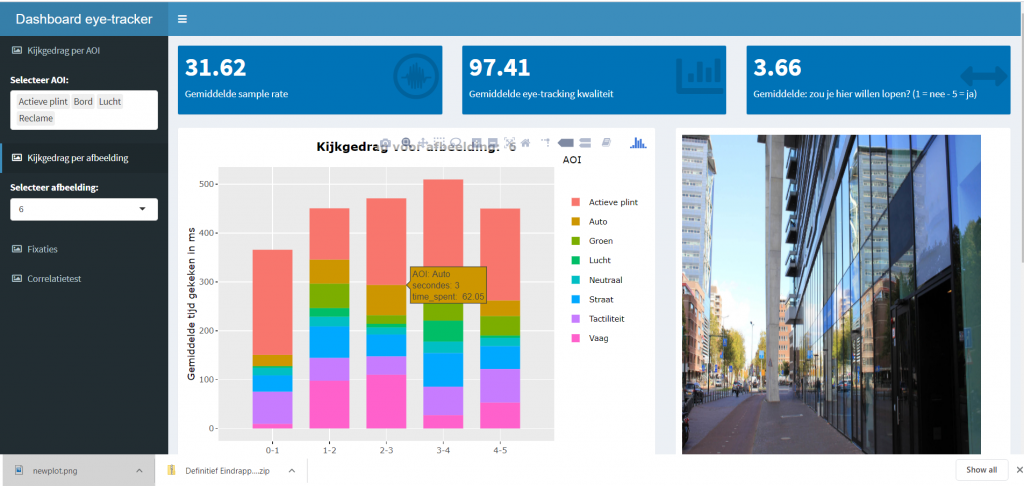
The interactive neuroarchitecture dashboard allows designers to enhance their designs with evidence-based insights
